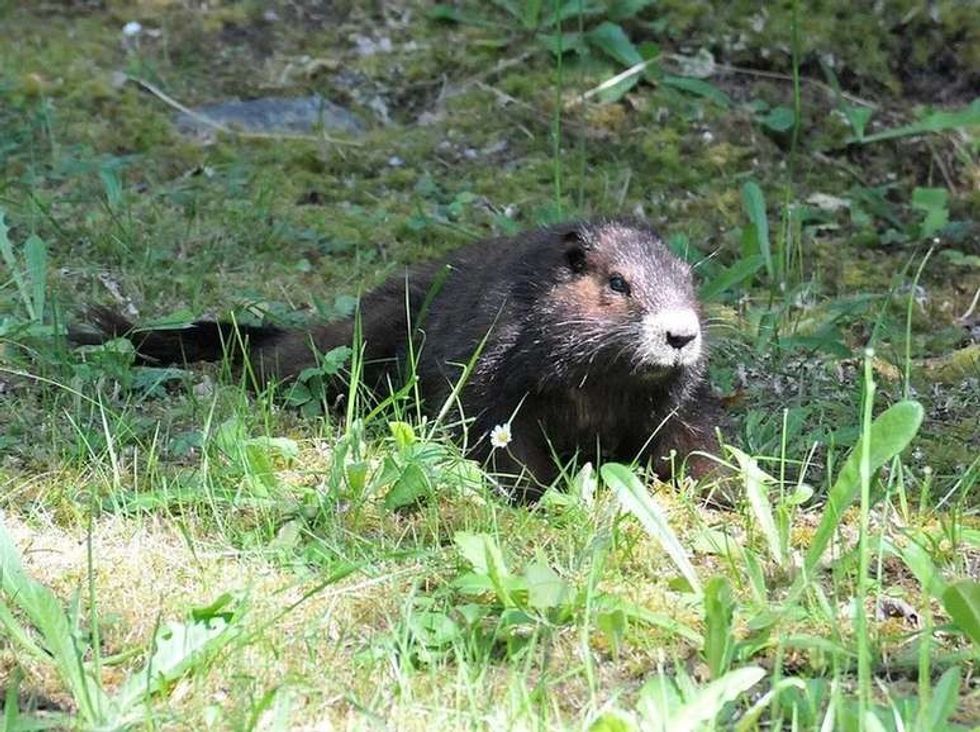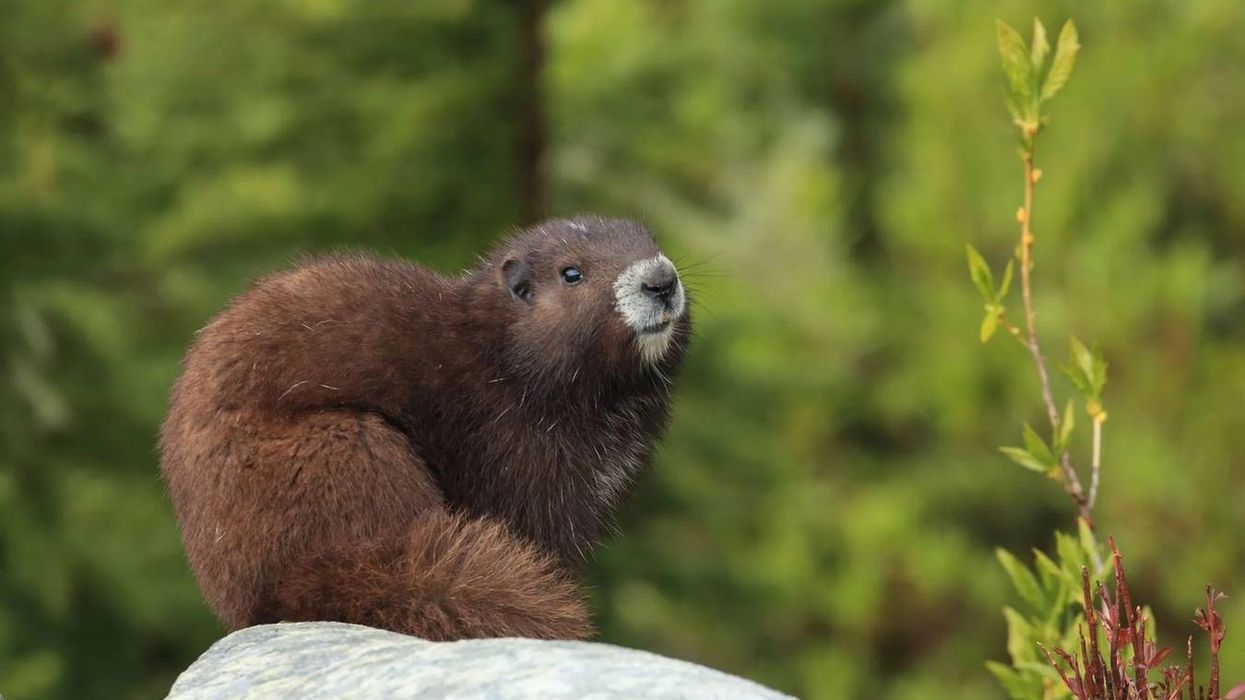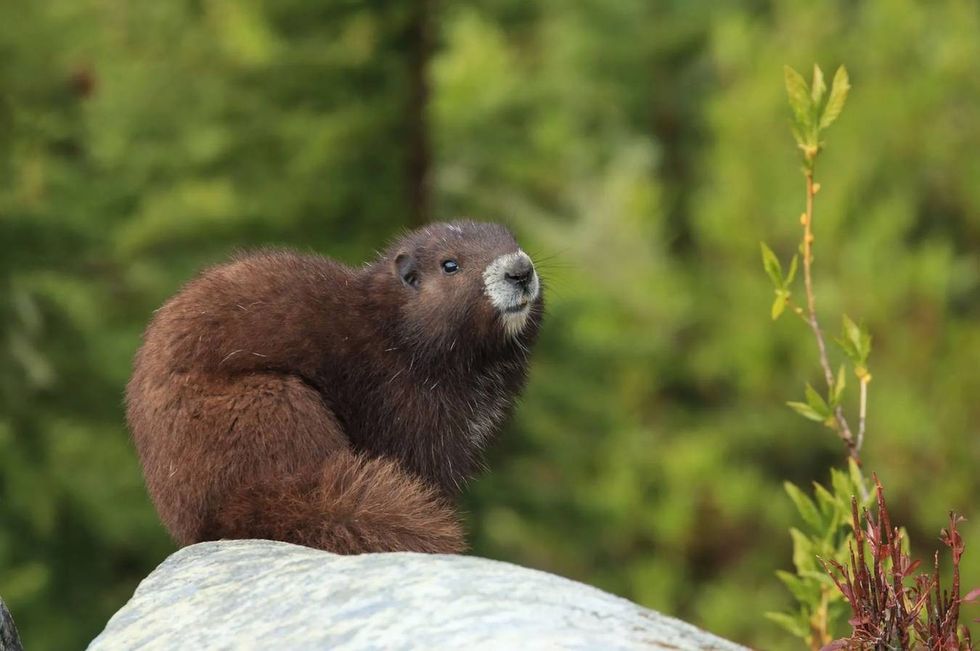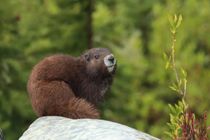Fun Vancouver Island Marmot Facts For Kids

The Marmota vancouverensis are a species of marmots found in Canada. They are very rare and Critically Endangered. They are a very interesting species to learn about.
They live underground rather than living on the surface. These animals hibernate and move in small groups.
Migration and hibernation are two very distinct features of this animal. Marmots are usually very interesting to know about, added to the fact that this species is so rare and would definitely pique your interest. Read on to learn about their habitat, diet, migration style among other things.
You can also read our articles on the Alpine Marmot and Hoary Marmot.
Vancouver Island Marmot Interesting Facts
What type of animal is a Vancouver Island marmot?
The Vancouver Island marmots are a species of endangered mammal found exclusively in British Columbia. This species of marmots hibernate during the winter season that starts from late September to protect themselves from the harsh winter and lack of food available during the time in their habitat. These animals are endemic and do not breed well in captivity.
What class of animal does a Vancouver Island marmot belong to?
The Vancouver Island marmot belongs to the class of Mammalia. The genus of this mammal species is Marmota.
How many Vancouver Island marmots are there in the world?
We already know that the Vancouver Island marmot (Marmota vancouverensis) is a mammal species that are Critically Endangered. Fifteen years ago, a group of scientists had gone to study the Marmota vancouverensis on Vancouver Island in Canada.
They found deeply troubling news there, that the marmot species was only 22 in number. Scientists stipulated that the marmot species would become extinct within the span of a year. Thankfully, that has not happened yet, but they are still recognized by the IUCN as Critically Endangered animals.
They are endangered and it is difficult to spot them even in their habitat. This is possibly due to their preference to live in burrows instead of on the surface.
Where does a Vancouver Island marmot live?
Vancouver Island marmots live in burrows. They live in small patches of alpine and sub-alpine meadows. This habitat choice is made keeping in mind their ability to dig burrows in the area.
In sub-alpine meadows, occasional winter avalanches and snow creep prevents trees from growing roots. These meadows also are the first to become clear of snow, produce grass and sedges. All these are things this marmot species relies on to emerge from hibernation.
What is a Vancouver Island marmot's habitat?
The Vancouver Island marmot (Marmota vancouverensis) lives on Vancouver Island in Canada. They live at a height of 3280.8 ft (1000 m) in alpine and sub-alpine meadows.
The marmot population is endemic and exclusively found in this habitat. Contrary to popular assumption, they do not reside in rocky mountains or forests. These animals dig burrows in these meadows where they are able to forage food.
These burrows also provide them a place to hibernate and large boulders provide them a suitable lookout which ensures protection from predators. Boulders are important for another factor, they help the marmot population to maintain their body temperature. Since they live in a habitat that is very cold in general, it is important to keep themselves warm.
You can spot them laid out stretching in the early morning or evening. This is an essential element of their habitat.
These burrows range in size and purpose. Small burrows are built to take cover from a predator whereas large burrows are used for hibernation and birthing.
They can also serve as quick and easy pathways for passage and exit. If you want to identify a hibernation burrow, try to spot grass and mud plugs at the entrance of the burrow. Generally, this endangered mammal chooses burrows for hibernation that are covered by snow during the winter season.
Who do Vancouver Island marmots live with?
The Vancouver Island marmot (Marmota vancouverensis) live in family groups. This group is usually very small and consists largely of family members.
The lack of a mate within their group is overcome by going to a nearby family group of marmots and finding a mate to reproduce with. This family group is referred to as colonies. Vancouver Island marmots hibernate with their family group.
How long does a Vancouver Island marmot live?
The lifespan of a Vancouver Island marmot is not known.
How do they reproduce?
The reproductive season begins shortly after the marmots emerge from hibernation. This period begins in early May. The litter size of the endemic species of marmot is around three to four pups. These pups are chocolate brown in color similar to adult marmots. They are not seen above ground until late June or July.
Female marmots begin mating from the age of three to four. They generally reproduce and give birth every year. The wild population of marmots lives for about 10 years while the marmots in captivity live for five years longer. Therefore, a female marmot can give birth to about 14 pups in their lifetime.
Since the group family of the Vancouver Island marmots largely consists of family members and no mates, they leave their natal homes in search of mates to nearby family groups. This is done to avoid the effects of inbreeding for a long time on the species.
Adult female and male marmots are both extremely attentive parents and stand guard of their burrows inside of which their pups are living. Pups live near their natal burrow for their first year and hibernate with their mother starting late September.
They gradually expand their movement but might return to their mother in the second year as well. Males usually mate with two females in a year.
What is their conservation status?
As we know, the IUCN recognizes Vancouver Island marmots as a species of animals Critically Endangered. The endangered Vancouver Island marmots are one of the rarest species of animals in the entire world! To combat this issue, conservationists around the world created a genetic lifeboat with the purpose of restoring wild populations.
There have also been somewhat successful attempts to breed the species in captivity. The program has grown over time and presently there are 130 individuals in captivity.
This includes 442 weaned pups born since 2010. There is a breeding center in Langley, BC as well. Many marmots have been released to Strathcona Provincial Park, Mount Cain, Mount Washington, and some other parks in the southern mountains.
The Marmot Recovery Foundation and the British Columbia Ministry of Environment have released about 308 marmots back into the wild. This has considerably improved their wild population but not enough to move them from the category of Critically Endangered species.
The Marmot Recovery Foundation built a dedicated marmot facility in Mt. Washington at the Vancouver Island with an aim to further improve their wild population size.
There are many reasons why the endangered Vancouver Island marmots are a species among the rarest besides their population being victims of long-term climate change, short-term weather changes they are also prone to predation from eagles, cougars, and wolves.
Clearcutting at low elevations of the forest has dramatically changed their population dynamics. It is very hard to find a suitable meadow to dig a burrow in.
There is another phenomenon that might be a contributory factor to their dwindling population. The zoologist Warder Clyde Allee suggested that marmots are social animals. Social animals require a critical mass in order to survive.
Survival requires group activities such as warning their colony of predators and migration. The marmot group behavior is learned and the loss of marmot culture has caused them to become more solitary and aggressive when they meet encounter marmots of their species.
All in all, the conservation status of the Marmota vancouverensis has considerably improved and concerned authorities are taking great care to improve their present condition.
Vancouver Island Marmot Fun Facts
What do Vancouver Island marmots look like?
Vancouver Island marmots have a chocolate brown body with white patches on their chest, nose, chin, and forehead. Pups have a brownish-black coat that fades in summer to a rusty brown at hibernation time. The slow fading in this coloration makes it easy to recognize the age of the pups.
Adults have teeth like beavers and short claws which enable them to dig deep. They have powerful shoulder and leg muscles.
Both male and female marmots lose about a third of their body weight after coming out of hibernation. Their season body mass variation from early May to September is significant. These animals can turn from sleek to plump in a matter of months.

How cute are they?
Marmots are very cute. Some of their mannerisms like touching each other's nose and play boxing are very adorable.
How do they communicate?
Adults give a piercingly loud whistle call when they are alarmed. This sound call has earned them the name of whistle pig.
The sound of their whistles can be heard across the Canadian mountains in which they reside. This species of marmots have five distinct shrills or sound calls which is more than any other species of marmots in the world.
They also have a cute manner of greeting each other by booping their nose which is considered a method of greeting while play-boxing or fighting is a way of them playing with each other.
How big is a Vancouver Island marmot?
The size of a Vancouver Island marmot range 22-27 in (56-68.6 cm). This differs for females and males. Marmots living in conservation centers or as a captive are slightly small. They are slightly bigger than a housecat.
How fast can a Vancouver Island marmot run?
The speed of a Vancouver Island marmot is not known.
How much does a Vancouver Island marmot weigh?
The wight of these animals ranges across age and females and males. The range is around 6-15 lbs (2.7-6.8 kg).
What are the male and female names of the species?
The males and females are not referred to with different names.
What would you call a baby Vancouver Island marmot?
A baby Vancouver Island marmot is called a pup.
What do they eat?
These animals are herbivores. They eat grass, wildflowers, lupines, and herbs.
Are they dangerous?
They can be aggressive at times, but they are not dangerous.
Would they make a good pet?
Considering their status as a Critically Endangered species of marmots and the fact that they are reserved in parks should be enough to know that they are not supposed to be kept as pets. Their population is way too vulnerable at the moment to risk keeping them as a pet.
You can always visit parks where they are being bred to release in the wild if you want to see them in person!
Did you know...
The fact that these animals are so rare and endangered, they have a symbolic value. They are a symbol of conservation in British Columbia, Canada. They were one of the mascots for the 2010 Winter Olympics and Paralympics. The Victoria Royals hockey team's mascot was inspired by this species of marmot.
Why are Vancouver Island marmots important?
Marmots increase soil infiltration in the process of digging soil and make the ecosystem suitable for various arthropods who live in the same habitat. Their digging activity helps plants that grow on the surface to receive the necessary nutrients.
How many endangered species are there on Vancouver Island?
There are more than 1,980 species of animals on Vancouver Island that are endangered. This includes monarch butterflies as well.
Here at Kidadl, we have carefully created lots of interesting family-friendly animal facts for everyone to discover! Learn more about some other mammals from our Masai giraffe fun facts and harbor porpoise facts for kids pages.
You can even occupy yourself at home by coloring in one of our free printable Mammals coloring pages.
Second image by Alina Fisher.
We Want Your Photos!
More for You
See All
Bachelor of English

Aparna BBachelor of English
With a Bachelor's degree in English from the English and Foreign Languages University, Hyderabad, Aparna is a skilled content writer who helps businesses craft compelling brand stories that resonate with their target audience. A creative individual, Aparna enjoys expressing her imagination through doodles and comics, honing her ability to create engaging narratives that capture the reader's attention. Aparna's extensive experience as a member of The Bharat Scouts and Guides has instilled in her a sense of responsibility, leadership, and teamwork that she brings to her work.
Bachelor of Arts specializing in Economics

Gowri RaoBachelor of Arts specializing in Economics
With a bachelor's degree in Economics from Krea University, Gowri is a highly skilled data analyst and an expert in regression and causation modeling. Her interests in economic trends, finance, and investment research complement her professional expertise. In addition to her professional pursuits, Gowri enjoys swimming, running, and playing the drums, and she is also a talented tutor.
Disclaimer
1) Kidadl is independent and to make our service free to you the reader we are supported by advertising. We hope you love our recommendations for products and services! What we suggest is selected independently by the Kidadl team. If you purchase using the Buy Now button we may earn a small commission. This does not influence our choices. Prices are correct and items are available at the time the article was published but we cannot guarantee that on the time of reading. Please note that Kidadl is a participant in the Amazon Services LLC Associates Program, an affiliate advertising program designed to provide a means for sites to earn advertising fees by advertising and linking to Amazon. We also link to other websites, but are not responsible for their content.
2) At Kidadl, we strive to recommend the very best activities and events. We will always aim to give you accurate information at the date of publication - however, information does change, so it’s important you do your own research, double-check and make the decision that is right for your family. We recognise that not all activities and ideas are appropriate for all children and families or in all circumstances. Our recommended activities are based on age but these are a guide. We recommend that these ideas are used as inspiration, that ideas are undertaken with appropriate adult supervision, and that each adult uses their own discretion and knowledge of their children to consider the safety and suitability. Kidadl cannot accept liability for the execution of these ideas, and parental supervision is advised at all times, as safety is paramount. Anyone using the information provided by Kidadl does so at their own risk and we can not accept liability if things go wrong.
3) Because we are an educational resource, we have quotes and facts about a range of historical and modern figures. We do not endorse the actions of or rhetoric of all the people included in these collections, but we think they are important for growing minds to learn about under the guidance of parents or guardians.







